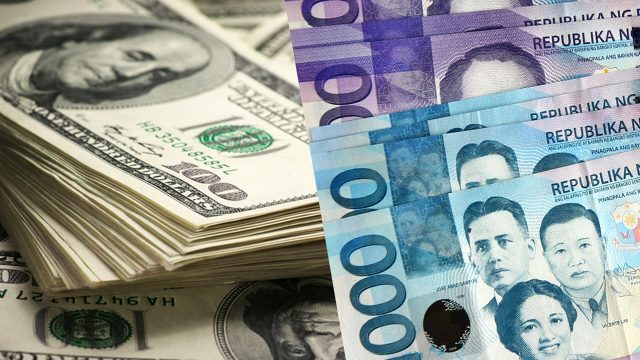SUMMARY
This is AI generated summarization, which may have errors. For context, always refer to the full article.

MANILA, Philippines – The Philippine peso breached P46 to $1 Wednesday, August 12, amid the volatile markets in the region, as well as China’s devaluation of its currency, the yuan.
Despite the newest 5-year low record, Bangko Sentral ng Pilipinas (BSP) Deputy Governor Diwa Guinigundo said in an interview with reporters Wednesday that the peso is holding its ground and was one of the least-depreciated currency in the region.
“I think our strong macroeconomic fundamentals, particularly the structural flows in the balance of payments, will provide a natural support to a stable peso,” Guinigundo said.
Markets in the region would remain volatile after the People’s Bank of China (PBOC) announced on Tuesday the devaluation of the Chinese yuan.
“It’s not done yet. Theoretically, (yuan) can depreciate by much more. Yuan becomes a floating exchange rate regime so there will be more volatility and bigger fluctuations. We have just seen the beginning,” Guinigundo said.
The Philippine peso yesterday lost 33 centavos to hit a 5-year low of P46.26 to $1, from Tuesday’s P45.93 to $1.
The local currency opened at P46 to $1 and hit P46.33 to $1 before recovering to P46.26 to $1.
Volume was again heavy at P1.1 billion ($23.81 million).
The central bank allows market forces to determine the peso’s movement.
The local currency’s movement would be affected by external developments such as the yuan devaluation, the Greek debt crisis, and the impending US Federal Reserve liftoff.
For his part, ING Bank Manila senior economist Joey Cuyegkeng said the BSP’s Monetary Board is likely to keep key interest rates unchanged.
Cuyegkeng said monetary authorities would also keep the reserve requirement ratio for banks unchanged at 20% as easing could add more volatility to the financial markets.
“But monetary easing even via the reserve ratio requirement would have implications on the volatility of financial markets especially with the foreign exchange market,” he said.
Cuyegkeng said the Monetary Board is not likely to tweak its policy stance during its Thursday, August 13 meeting, after the Chinese central bank decided to let the yuan depreciate against the US dollar.
A 1-percentage point cut in the reserve requirement ratio for banks releases around P66 billion ($1.43 billion) to P67 billion ($1.45 billion) into the financial system.
The reserve requirement ratios – the central bank regulation that sets the minimum fraction of customer deposits and notes that each commercial bank must hold as reserves – were left unchanged as well.
The BSP has kept key policy rates steady since September 2014. The overnight borrowing rate is pegged at 4% and the overnight lending rate is at 6%.
Overnight borrowing is the interest rate on the overnight lending rate transaction, typically contracted between the BSP and banks. Overnight borrowing may also have overnight or term maturities.
The special deposit accounts (SDAs) or fixed-term deposits by banks and trust entities of BSP-supervised financial institutions were also kept steady – Rappler.com
$1 = P46.15
Add a comment
How does this make you feel?
There are no comments yet. Add your comment to start the conversation.